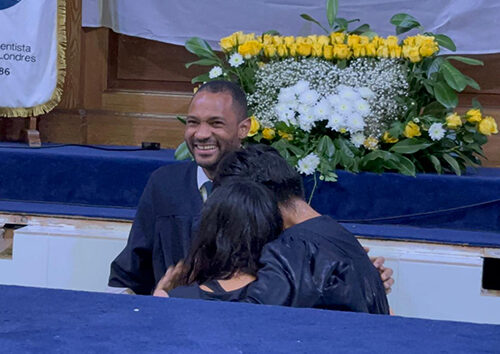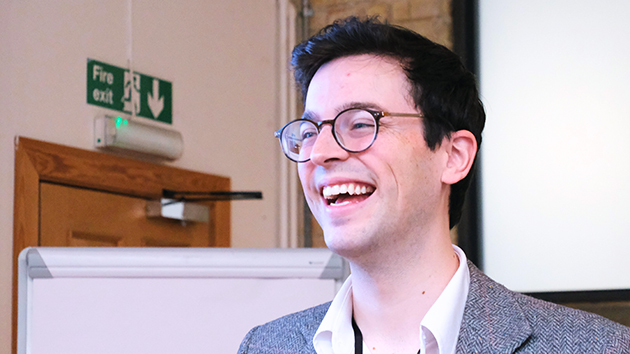19 February 2020 | Røyse, Norway [Nina Myrdal]
New curriculum standards for the course ‘Christianity, Religion and Ethics’ in Norwegian elementary schools owned and operated by different churches and denominations in Norway come into effect in August 2020. To prepare for the changes, 25 religion teachers from Adventist schools across Norway met for a professional workshop on Wednesday, 5 February.
The Bible is central to the course in all Adventist schools. To help emphasise that, Hans Johan Sagrusten from Verbum (the Norwegian Bible Society publishing house), inspired teachers with a lecture, ‘The book on the Book’. This was based around his recent publication of the same title. He demonstrated how the ‘book collection’ of the Bible has been valued and preserved for 2,000 years.
Sagrusten began his lecture by talking about how we read. He noted that on the train to Oslo twenty years ago, most people had a newspaper or book in front of them. Today everyone is staring at small screens, scrolling down to read the text. He used this as an example to illustrate how technology affects how we read. He reminded us that books are technology, but that we may forget it because we are so used to them. We are used to finding a book, turning the pages as we read. Usually, we read by ourselves, and we are used to having great access to reading material. However, that has not always been the case.
Before Gutenberg invented printing with movable type, books were handwritten, mainly in monasteries. It took a long time and was a painstaking job. It was also expensive, not only because of the time spent but also because of the materials. It took many animals to get enough parchment pages for a Bible. Because of this, Bibles were not for the common people. If you wanted access to the Bible, you had to come to church and hear the Bible read. In a time span of 1,400 years from New Testament times until the art of printing was invented, an estimated 500,000 Bibles were handwritten. In the twelve years from when Martin Luther translated the Bible in 1534 until he died in 1546, as many Bibles were printed as had been handwritten in the 1,400 previous years.
Thus, the world of biblical literacy changed. With printing, the Reformation, and then through the development of Bible Societies, “many people in our part of the world own a Bible and Bible reading is largely an individualised activity,” Sagrusten stated. This led to a workshop discussion on the advantages and disadvantages of individualised reading compared to reading and listening together. We discovered that both are useful and important.
Before books, or codices as they were originally called, the scrolls prevailed. The transition from scrolls to books also affected reading. It goes without saying that it is easier to look up and compare texts when the text is in a book. When you have to scroll through the text, you are forced to read texts in context. Both have their advantages and perhaps some disadvantages. It’s great to be able to compare and see how different texts address the same topics. But it is also nice to read texts in their entirety. It gives a different understanding when you read an entire Bible book in context compared to reading a few verses here and there.
Workshop participants discussed how many Bible texts give us condensed stories with the need to read a little bit between the lines. The biblical text is open to interpretation and Sagrusten claimed that the condensed and open style of the Bible demands that we think for ourselves. When we do this, he suggested, the biblical message becomes internalised.
There is a difference with many Bible books for children. There the text has often been surrounded with many details and emotions. Sagrusten encouraged religion teachers to read Bible texts for the students. “If we wonder with them and talk about the text, it will open up in a completely different way to the students and the Bible becomes theirs,” he said.
Sagrusten concluded that “it brings joy and humility to think about how much has been done by so many over thousands of years for me to read my Bible every day. It reinforces my belief that God has preserved the Word in this way.”
Sagrusten is particularly engaged in working with the source manuscripts of the Bible. He was one of the translators of the Norwegian Bible translation published in 2011.
tedNEWS Staff: Victor Hulbert, editor; Deana Stojković, associate editor
119 St Peter’s Street, St Albans, Herts, AL1 3EY, England
E-mail: [email protected]
Website: www.ted.adventist.org
tedNEWS is an information bulletin issued by the communication department of the Seventh-day Adventist Church in the Trans-European Division. Readers are free to republish or share this article with appropriate credit including an active hyperlink to the original article.



